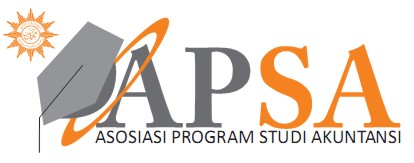Effects of cost information, environmental innovation, and gender on new product development performance
DOI:
https://doi.org/10.18196/jai.v26i2.26719Keywords:
Cost Information, Environmental Innovation Practices, Gender, New Product Development, Cost Efficiency, SustainabilityAbstract
Research aims: This study aims to examine the influence of cost information,
environmental innovation practices, and gender on new product development
performance.
Design/Methodology/Approach: Experimental methodology with 2x2 factorial design. There were 117 participants consisting of students from the Faculty of Economics and Business who had taken Management Accounting and Cost Management courses.
Research findings: The findings indicate that the performance of new product development is not significantly impacted by cost information or environmental innovation techniques. Nonetheless, there are notable relationships between gender and environmental innovation methods and cost information, suggesting that the influence varies depending on the designer's gender.
Theoretical contribution/ Originality: This study fills a gap in the literature by investigating the interaction between gender, environmental innovation strategies, and cost information in developing new products. The study adds to our understanding of how these factors could influence the efficacy of product development and decision-making pertaining to sustainability.
Practitioner/Policy implication: This study suggests that firms need to consider
gender differences in environmental innovation practices to optimize new
product development. In addition, presenting relevant cost information
remains important in supporting strategic decision-making.
Research limitation/Implication: Unequal group sizes may reduce statistical sensitivity. Using students limits real-world relevance. Future studies should consider work experience and include professionals to enhance external validity.
References
Akbar, R., Siroj, R. A., Win Afgani, M., & Weriana. (2023). Experimental Reseacrch Dalam Metodologi Pendidikan. Jurnal Ilmiah Wahana Pendidikan, 9(Vol 9 No 2 (2023): Jurnal Ilmiah Wahana Pendidikan), 465–474. https://jurnal.peneliti.net/index.php/JIWP/article/view/3165
Alfiana, B. Z., & Jatiningsih, D. E. S. (2022). The Influence Of Cost Information Types, Strategy, And Type A Behavior Pattern On New Product Development Performance. E-ICOAEF IX, 1–20. https://etd.umy.ac.id/id/eprint/37087
Amanah, D., Indonesia, U. P., & Agustini, F. (2020). Strategi Pengembangan Produk dalam Meningkatkan Pendapatan Taman Margasatwa Medan (TMM) Tahun II. August. https://doi.org/10.13140/RG.2.2.34606.74565
Anh, D. L., Thu, P. T. B., & Hue, L. T. M. (2023). A Study on the Impact of the Usage of Cost Information on Business Performance of Enterprises in Vietnam. International Journal of Professional Business Review, 8(6), e02429. https://doi.org/10.26668/businessreview/2023.v8i6.2429
Aziza, N., Wijaya, E., Rinawati, Utami, R. N., & Negsih, T. A. (2024). Pengantar Statistik : Analisis Varian ( ANOVA ) (Issue February).
Balzano, M., & Marzi, G. (2023). Exploring the pathways of learning from project failure and success in new product development teams. Technovation, 128(October), 102878. https://doi.org/10.1016/j.technovation.2023.102878
Booker, D. M., Drake, A. R., & Heitger, D. L. (2007). New Product Development : How Cost Objective Setting. Behavioral Research in Accounting, 19, 19–41. https://doi.org/10.2308/bria.2007.19.1.19
Fernando, Y., Tseng, M. L., Sroufe, R., Abideen, A. Z., Shaharudin, M. S., & Jose, R. (2021). Eco-Innovation Impacts on Recycled Product Performance and Competitiveness: Malaysian Automotive Industry. 28. https://doi.org/10.1016/j.spc.2021.09.010
Gomez-Conde, J., Lunkes, R. J., & Rosa, F. S. (2019). Environmental innovation practices and operational performance: The joint effects of management accounting and control systems and environmental training. Accounting, Auditing and Accountability Journal, 32(5), 1325–1357. https://doi.org/10.1108/AAAJ-01-2018-3327
Husniar, F., Sari, T. R., Safira, A. M., & Kamila, E. R. (2023). Strategi Pengembangan Produk Baru Sebagai Upaya Dalam Meningkatkan Daya Saing Perusahaan. Jurnal Riset Manajemen Dan Akuntansi, 3(2), 22–34. https://doi.org/10.55606/jurima.v3i2.2156
Ismiati, A. D., Ainiyah, M., & Robi’aqolbi, R. (2024). Perbedaan Cara Pengambilan Keputusan antara Laki-laki dan Perempuan Menurut Al-Qur’an. Al-I’jaz : Jurnal Studi Al-Qur’an, Falsafah Dan Keislaman, 5(2), 76–93. https://doi.org/10.53563/ai.v5i2.104
Karmarkar, U. R. (2023). Gender differences in “optimistic” information processing in uncertain decisions. Cognitive, Affective and Behavioral Neuroscience, 23(3), 827–837. https://doi.org/10.3758/s13415-023-01075-7
Karniouchina, K., Theokary, C., Rice, L., Uslay, C., & Reilly, S. (2020). Is new product development impacted by the manager’s gender? The case of motion pictures. Rutgers Business Review, 5(3), 326–341.
Luan, N. T., Hau, D. N. D., & Thu, N. T. A. (2022). The Influence of Green Product Development Performance to Enhance Enterprise Effectiveness and Innovation. Economies, 10(5). https://doi.org/10.3390/economies10050113
Meyer, & Levy, J. (1989). Gender Differences in Information Processing: A Selectivity Interpretation. In Cognitive and Affective Responses to Advertising. Journal of Marketing Research, April, 219–260. http://www.jstor.org/stable/3172728
Minasyan, D., & Tovmasyan, G. (2020). Gender Differences in Decision-making and Leadership: Evidence from Armenia. Business Ethics and Leadership, 4(1), 6–16. https://doi.org/10.21272/bel.4(1).6-16.2020
Musaad, A. S., Zhuo, Z., Musaad, A. O., Siyal, Z. A., Hashmi, H., & Shah, S. A. A. (2020). A fuzzy multi-criteria analysis of barriers and policy strategies for small and medium enterprises to adopt green innovation. Symmetry, 12(1). https://doi.org/10.3390/SYM12010116
Nurjanah, T., & Jatiningsih, D. E. S. (2023). Cost Information Types and Ego Depletion : The Role in New Product Development. Proceeding Medan International Conference Economics and Business, 1(January), 1627–1637.
Otley, D. T. (1980). Accounting, Organizations and Society. 5(4). https://doi.org/10.1016/0361-3682(80)90040-9
Paparoidamis, N. G., Tran, T. T. H., Leonidou, L. C., & Zeriti, A. (2019). Being Innovative While Being Green: An Experimental Inquiry into How Consumers Respond to Eco-Innovative Product Designs. Journal of Product Innovation Management, 36(6), 824–847. https://doi.org/10.1111/jpim.12509
Pujari, D. (2006). Eco-innovation and new product development: Understanding the influences on market performance. Technovation, 26(1), 76–85. https://doi.org/10.1016/j.technovation.2004.07.006
Rizqy, G. L., Chan, A., Barkah, C. S., & Tresna, P. W. (2021). Jurnal Manajemen Jurnal Manajemen. Analisis Persepsi Konsumen Terhadap Perceived Quality Dalam Upaya Pengembangan Strategi Produk Usaha Masker (Studi Kasus Pada Usaha Masker Die Wolke), 11(1), 87–97. https://doi.org/10.26460/jm.v11i1.2183
Shandy, N. A. (2020). Contingency Theory and The Role of Mediating Effect. https://osf.io/preprints/zxfyt/%0Ahttps://osf.io/zxfyt/download
Sweller, J. (1988). Cognitive load during problem solving: Effects on learning. Cognitive Science, 12(2), 257–285. https://doi.org/10.1016/0364-0213(88)90023-7
Wardani, R. A., & Jatiningsih, D. E. S. (2024). Selectivity hypothesis and task bind : Explaining gender difference in NPD ’ s cost information and control adoption. 25(2). https://doi.org/10.18196/jai.v25i2.22555
Yasaputri, K. (2023). The Influence of Cost Information Type and Work Stress on New Product Development Performance. Universitas Muhammadiyah Yogyakarta.
Yin, S., Li, B., Zhang, X., & Zhang, M. (2019). How to improve the quality and speed of green new product development? Processes, 7(7). https://doi.org/10.3390/pr7070443
Downloads
Published
How to Cite
Issue
Section
License
Copyright (c) 2025 Alvina Windy Pihany, Dyah Ekaari Sekar Jatiningsih

This work is licensed under a Creative Commons Attribution-NonCommercial-NoDerivatives 4.0 International License.
License
 Journal of Accounting and Investment is licensed under Creative Commons Attribution Attribution-NonCommercial-NoDerivatives 4.0 International License.
Journal of Accounting and Investment is licensed under Creative Commons Attribution Attribution-NonCommercial-NoDerivatives 4.0 International License.




